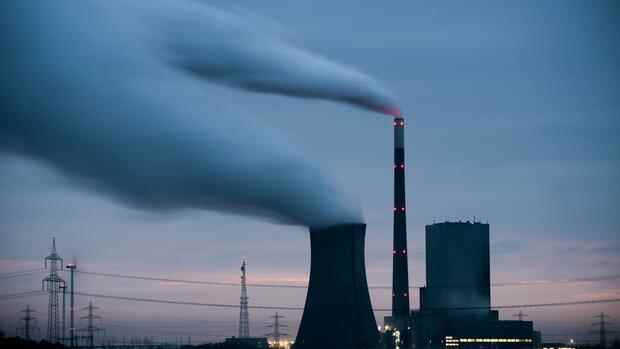Trading in certificates allows the emission of CO2 in the EU.
(Photo: dpa)
The heart of European climate policy is trading in certificates that allow the emission of carbon dioxide (CO2). The basic idea behind this is that the best way to reduce pollutants is to price them.
This can be achieved by levying a tax on CO2 emissions that is high enough not to exceed a target level of emissions. However, it is also possible to place a quantity of tradable certificates on the market that corresponds to the emissions target. The price of the CO2 emissions is then determined via the financial market. In the textbook, both approaches are equivalent if one can correctly assess the demand for certificates.
The European Union opted for the certificate solution back in 2005. So far, it has only applied to the energy sector, energy-intensive industries and intra-European air traffic. Since the amount of certificates provided was initially measured very generously, their market price was so low by 2017 that there were only weak incentives to save energy. From 2018 to 2020, the price rose relatively steadily and reached around 30 euros per ton, which corresponds to the current CO2 tax in Germany.
Since January 2021 things have been going up steeply. With a current level of more than 80 euros, the price has almost tripled within a year.
Top jobs of the day
Find the best jobs now and
be notified by email.
One reason for this sharp rise in prices is the rise in the price of natural gas, which has led to more electricity being produced using coal-fired power plants. They need more CO2 certificates than gas power plants. But there are also signs that the CO2 course is increasingly being driven by hedge funds and investment funds that have discovered an attractive investment alternative in certificates. The energy price shock is thus amplified by certificate trading.
Price path should be easy to predict
This is not a good omen for the EU’s plans to introduce certificate trading for the building and transport sectors from 2026 onwards. It should once again put the principle of CO2 pricing by the financial market to the test.
At its core, climate policy strives for a steadily increasing CO2 price over time. In order to give companies planning security, the price path should be as predictable as possible up to 2030.
Peter Bofinger is a professor of economics at the University of Würzburg and was a member of the Advisory Council.
(Photo: SVR)
With lending rates for financial investors close to zero, this predictability opens up almost risk-free profits for speculators. They drive the certificate price directly to the level expected for 2030. Contrary to what the politicians are aiming for, there is an abrupt price increase that overwhelms the economy and consumers.
Therefore, the EU should rely on a CO2 tax instead of the dysfunctional certificate trade. A study by the economists Axel Ockenfels, Peter Werner and Ottmar Edenhofer also showed that direct pricing through taxes leads to significantly lower CO2 emissions.
More: Comment: The abolition of the EEG surcharge is not enough.
